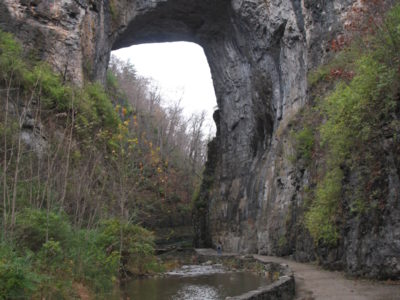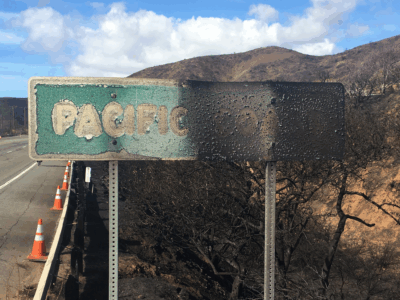How Much Is Nature Worth?
Federal Government Launches Major Accounting Initiative
When we bite into a juicy apple we may think of the farm’s orchard, but not of the natural pollinators that fertilize the apple blossom so the fruit can set. When we drink a cool glass of water from the tap we may think of the local reservoir, but the real source of the water quality lies many miles upstream in the wooded watershed that filters and cleans the water as it flows downhill. Largely taken for granted, the natural capital of healthy ecosystems provides a variety of such critical services. Research by ecologists and economists in recent years has demonstrated the extremely high costs of replacing many of these services if they were to fail — on the order of many billions of dollars in the United States for pollination alone.
The costs from reducing natural capital are high, suffered in rich and poor countries alike. Given its central role in provision of important public benefits, one might expect that the value of natural capital would be a core part of national accounts. That has not been the case, but change may be afoot thanks to the recent report from the White House, National Strategy to Develop Statistics for Economic Decisions. Despite the decidedly unsexy title, the report is a big deal for those who care about conservation.
It has long been recognized that Gross Domestic Product (GDP) is an incomplete and, in many ways, misleading measure of economic growth. Indeed, Simon Kuznetz, the Nobel laureate who created the metric, pointed out that an increase in the level of economic activity is not the same thing as an increase in wellbeing. People are surely not better off after a natural disaster, even though the rebuilding efforts will result in a rise of GDP. In an influential study in 1989, Robert Repetto and co-authors demonstrated that Indonesia’s GDP was 3% lower than reported because of deforestation and natural resource extraction.
Part of the challenge lies in collecting data. We have all kinds of information on light and heavy vehicle sales in every state. Not so much for loss of coastal wetlands. Another challenge lies in crunching the data, translating biophysical measures (such as loss of coastal flood protection) into economic value measures (dollars and cents).
In recent years, the United Nations has spearheaded an initiative across 80 countries known as the System of Environmental Economic Accounting (SEEA). It creates a framework for integrating economic and environmental data amore comprehensive understanding of a nation’s wealth. China has been introducing the measure of Gross Ecological Product (GEP) in major regions. The United Kingdom sponsored a high profile report last year led by Sir Partha Dasgupta on The Economics of Biodiversity. One of its key messages called for “Introducing natural capital into national accounting systems [which] would be a critical step towards making inclusive wealth our measure of progress.”
The United States has also been active. Executive Order 14072, announced on this year’s Earth Day, directed agencies “to identify key opportunities for greater deployment of nature-based solutions across the Federal Government, including through potential policy, guidance, and program changes.” The recent report on a National Strategy to Develop Statistics for Natural Capital Accounting is a major step in this process.
Co-led by the White House Office of Science and Technology Policy, the White House Office of Management and Budget, and Department of Commerce with a working group drawn from 18 different offices and departments across the Executive Branch, the report makes five recommendations for how to develop and then use the natural capital accounts (excerpted below).
- Accounts should be pragmatic and support decision making that advance: (1) macro-economic stability and sustainable development; (2) federal decision making in programmatic, policy, and regulatory settings; (3) the competitiveness of U.S. businesses; (4) the resilience of State, Territorial, Indigenous, Tribal, and Local communities; and (5) conservation and environmental policy.
- Accounts should provide domestic comparability through time and advance international comparisons and harmonization in order to enable the United States to maintain and enhance leadership with respect to the development of global standards and implementation of those standards.
- The Government should apply existing authorities and make use of the substantial expertise within Federal agencies by coordinating across agencies to develop the system of natural capital accounts and environmental-economic statistics in an efficient manner.
- The Government should use a 15-year phased approach to transition from research grade environmental-economic statistics and natural capital accounts to Core Statistical Products, which includes a single headline summary statistic along with supporting products and reports.
- The Government should embed the system of natural capital accounts and associated environmental-economic statistics in the broader U.S. economic statistical system
As with all ambitious government initiatives, the proof will be in the implementation. A few things to watch as this develops:
- The 15-year phased approach is an important and recognizes that it will take time to implement. Are accounting and statistics sufficiently low profile that the programs will survive change in administrations?
- The requirement for a headline summary statistic certainly makes it easier for policy makers and the media, but is it useful? There has long been a debate over the ability of economic methods to translate biophysical measures to dollars and cents. What dollar amount should the accounts show to reflect a loss of thousands of coastal acres in low-lying Louisiana?
- Importantly, natural capital accounting is not the same thing as cost benefit analysis. Creating this information on a regular and standardized basis will represent an impressive achievement, but will policy makers use this information? Will the public and media be able to move beyond its obeisance to the growth and decline of GDP?
As the management adage reminds us, we value what we measure. And what gets measured, gets done (and conserved).
For those who want to dive deeper, OMB is accepting public comments on the plan through October 21st. You can submit by clicking here.
Reader Comments
2 Replies to “How Much Is Nature Worth?”
Comments are closed.







Government and industry wont clean up the environment nor attempt to asses and recover natural resource and environmental damages by polluters, but here is the next best thing: lots more billables for the legions of polluter lawyers and their technical experts.
Government and industry wont clean up the environment nor attempt to assess and recover natural resource and environmental damages by polluters, but here is the next best thing: lots more billables for the legions of polluter lawyers and their technical experts.